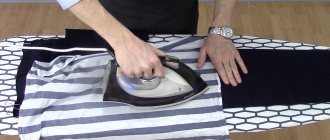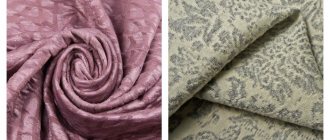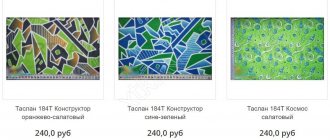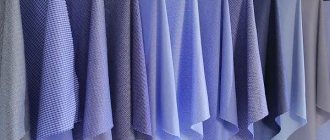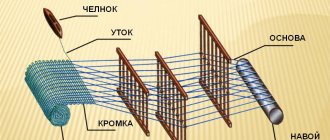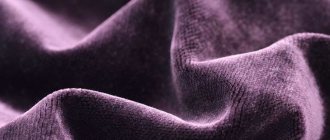buy sisal at any florist store. In our store you can buy sisal fibers of different colors. The price of sisal is very low, so it is often used by needlewomen all over the world. How to use sisal correctly? How much is needed for this or that product? Such questions arise quite often, which is why I decided to write this article. I hope it helps you at least a little in working with sisal. What does sisal even look like for florists? How is it packaged?
The use of sisal in floristry is very widespread. It is used for room decoration, for arranging bouquets and flower arrangements, for gift wrapping, for making souvenirs, dolls, toys, in the production of handmade soap, jewelry and topiary.
See below for several ways to use sisal with photographs of finished products. I will not describe how to make this or that product in detail. There are already several of my articles on this topic, so now I will just show what can be done from sisal fibers.
How is fiber obtained?
What is sisal material made from? Fresh leaves from the agave genus are used to obtain natural fibers. This is a perennial tropical plant that is used for industrial purposes. Each leaf of the plant contains a number of long, straight fibers that can be removed in a process known as decortication.
Fiber extraction
This species is grown on plantations in Asia and Africa.
Sisal - what is it, what is it made from and how is it used in practice? Mexican sisal is not subject to special processing. Using a decortication machine, the leaves are crushed, resulting in the fibers being separated. They are thoroughly cleaned and washed with cool water. Sun drying is recommended.
Note! A brush is used to process the fibers.
Original topiary
You will need: white and purple sisal, glue gun, artificial flower stems, scissors, gypsum, purple flower pots, foam ball with a diameter of 6cm, purple flowers, lilac ribbon for bows, white openwork braid, beads, key pendant, lavender essential oil .
Master Class
- Use scissors to make a small hole in the foam ball.
- Twist the flower stems together, drop hot glue inside the foam ball and insert the stems.
- Roll white and purple sisal into equal sized balls.
- Glue the balls onto the foam ball, placing them tightly together.
- Glue flowers between some balloons of your choice.
- Make ribbon bows, then glue them onto sisal balls.
- Dilute the plaster to the consistency of sour cream, pour it into a flowerpot, immerse a tree trunk in it and hold it in a vertical position for 3 minutes.
- Wait for the plaster to harden.
- Prepare the sisal, apply hot glue to the plaster surface and glue the sisal, then glue the flower.
- Attach a key pendant and tie an openwork braid around the tree trunk.
- Decorate the topiary by gluing beads of your choice.
The original sisal topiary is ready! I recommend watching this video!
MK DIY SISAL Topiary \Lilac Dream
Making fiber from improvised materials
Sisal - what is it, a question that interests many manufacturers. Sisal fibers are completely biodegradable. This is a durable material and is moisture resistant. For their production, soy protein is used, to which gelatin is added. Thanks to the modified soy protein resin, high stability is ensured. Products can withstand any mechanical or thermal impact.
How fibers are made from improvised materials
Many people wonder: sisal - what is it, what is its texture? Thanks to its unique properties, sisal is a durable material that absorbs paint. Therefore, you can find products in different shades on the market. This fabric contains no pesticides or chemical fertilizers.
Sisal tree of happiness
You will need: flowerpots, thin and thick wire, building plaster (alabaster), green sisal, foam ball with a diameter of 8cm, glue gun, thick threads, brown acrylic paint, PVA glue, 4 pcs wooden skewers, chain, scissors, decorative elements – apples, leaves and a bird.
Master Class
- Form a trunk from thick wire, fastening with thin wire, as shown in the image.
- Dilute the plaster to the consistency of sour cream, pour it into a flowerpot, immerse a tree trunk in it and hold it in a vertical position for 3 minutes.
- Wait for the plaster to harden.
- Form another branch from thin wire and attach it to the trunk.
- Wrap the ball with thick threads.
- Use scissors to make a small hole in the foam ball.
- Apply hot glue to the end of the barrel and insert into the hole of the foam ball.
- Make the modeling mass in this way: mix alabaster, water and pva glue to the consistency of thick sour cream, then coat the entire trunk and wait until it hardens.
- Paint the trunk with brown acrylic paint in 2 layers and leave to dry.
- Roll sisal balls.
- Glue the sisal balls, apples and leaves onto the foam ball.
- Make a swing using skewers and a chain.
- Hang the swing on a branch and attach the bird.
The sisal tree of happiness is ready! I recommend watching this video!
TOPIARY MAGNET for the refrigerator. DIY gift MK/DIY
Properties of sisal rope
A rope made of sisal natural fabric is distinguished by its durability, visual properties, and environmental friendliness. This product is used in the manufacture of fastening elements for loading and unloading operations, as well as in construction. Some designers use this item as a decorative element.
You may be interested in this Tips on what fabric to choose for a tablecloth
Properties
Due to the fact that no heat treatment is used in the production of fibers, and there are no chemical additives, the ropes perfectly maintain their performance qualities. There is no charge of static electricity on the surface of the product.
Chemical composition of fibers:
- Cellulose - 65%,
- Hemicellulose - 12%,
- Lignin - 9.9%,
- Waxes - 2%.
Flower topiary
You will need: pink and beige sisal, building plaster (alabaster), a small pot, white fabric, pink tulle, glue gun, newspaper, thick floral wire, decorative elements - flowers, beads, ribbons...
Master Class
- Form a newspaper ball with a diameter of 10 cm.
- Roll sisal balls.
- Glue the flower to the top of the ball, then glue the sisal balls around the flower. In this way, decorate the entire crown.
- Form a rope from beige sisal and wrap it around the wire, securing with hot glue.
- Bend the wire to create a shaped trunk.
- Glue the beads around the perimeter of the barrel.
- Make a small hole at the base of the crown and glue the trunk into it.
- Glue beads and berries to the crown.
- Dilute the plaster to the consistency of sour cream, pour it into a flowerpot, immerse a tree trunk in it and hold it in a vertical position for 3 minutes.
- Wait for the plaster to harden.
- Prepare a square of white fabric, gather it towards the trunk and tie it with a ribbon. Repeat this process with tulle.
- Glue the berries, butterfly and rose to the base of the tree.
- Tie a ribbon at the base of the tree crown.
Sisal flower topiary is ready!
Why is it used in mattresses?
Picture 4. Used to make mattresses
Sisal - what is this material and why is it used in mattresses? Natural fibers are ideal for creating orthopedic mattresses. Recently, this type of fabric has begun to be actively used in many spectrums.
Note! To produce an orthopedic product, layers are made using dry fibers. They are also impregnated with latex.
These elements come in different thicknesses. Due to its high strength, the sisal layer evenly distributes the body load along the entire length. Thus, a unique orthopedic effect is achieved. If specialists used the natural material sisal in the production of mattresses, then the products will differ as follows:
- wear resistance;
- durability;
- healing effect;
- moisture resistance;
- withstand heavy load.
Exquisite topiary
You will need: cream-colored sisal, alabaster, glue gun, newspaper, flower pots, yarn, barrel, scissors, decorative elements - flowers, beads...
Master Class
- Form a ball out of newspaper and secure it with yarn.
- Roll sisal balls.
- Cover the ball with flowers and sisal balls, just leave room for the trunk.
- Make a hole with scissors to the depth of the ball, apply glue to the barrel and secure it in the ball.
- Dilute the plaster to the consistency of sour cream, pour it into a flowerpot, immerse a tree trunk in it and hold it in a vertical position for 3 minutes.
- Wait for the plaster to harden.
- Decorate the base of the tree with sisal and flowers.
- Decorate the topiary by gluing beads.
Exquisite sisal topiary is ready!
Sisal in the interior
To decorate their favorite house, many housewives resort to various tricks. They create original crafts with their own hands using various materials. You should pay attention to this material, which is the most important element for creating decorative jewelry/crafts.
This type of fabric can be used as a filler to create various vessels in combination with decorative glass, soils and stones, or as an outer wrap. The filler should be used as fibrous sisal, and as a wrapper you can use either a glued version or a fibrous one. This way you can achieve the effect of a “fluffy” composition.
Element as part of the decor
Using such an element, you can create a festive decor. Napkins that are wrapped in sisal cloth and cut into thin strips look more beautiful. In addition, a needlewoman can create unusual rings or decorate the bases of any dishes.
Note! If the fibers are placed in a ball, the needlewoman can easily create the most original voluminous pendant or decoration on a thin stem.
You might be interested in What are non-flammable and fire-resistant fabrics
Bright sisal topiary
You will need: a foam ball, a flower pot, green and white acrylic paints, a branch for the trunk, green sisal, small stones, paper, a glue gun, a brush, wire, scissors, jute thread, decorative elements - berries, flowers...
Master Class
- Paint the foam ball green and the branch white.
- Make a hole to the middle of the ball's depth.
- Carefully coat the table with glue and secure it in the ball.
- Secure the tree in the pot in this way: place a sheet of paper on the bottom of the pot and cover it with stones, place the trunk among them.
- Wrap the ball in sisal, securing it with hot glue.
- Attach berries and flowers to decorate the tree crown.
- Decorate the base of the tree with sisal and decorative elements.
Bright sisal topiary is ready!
How is sisal used in needlework?
What is sisal material and what is it used for? Needlewomen often ask this question. It should be noted that natural fabric is often used in floristry. Any novice craftswoman can make handmade items to transform the interior. Depending on the task at hand, the needlewoman can choose either a dense or thin texture to create crafts for the holiday, for example, Easter or New Year decorations.
Sisal in needlework
Topiary made from sisal balls
Many people do not know that ball topiary is also called the tree of happiness. Their structure should not be loose or transparent. Otherwise they will easily unravel. More durable products add extra weight to the wood. The ideal option is medium density.
Balloon topiary
When making fibers for balls, you need to take into account the length. Basically, this value should not exceed more than 38 cm. If the ball is small, then you will have to take a minimum amount of fibers. For example, a product up to 15 cm will bloom regularly. It is not recommended to use wet material. Wet, even fibers do not connect one after another. After they are dyed a different color, you need to wait until the fibers dry.
Important! If you don’t have time to wait, then you can take a hairdryer and dry the product.
Sometimes the fabric starts to prick your hands, so you can moisten it a little. Before performing work, the material must be cleaned of excess substances. It is advisable to remove very thick fibers, as they practically do not curl. If you still have to start working with such fibers, then the protruding ends of the product must be carefully trimmed with scissors.
Manufacturing process
The ball must be twisted from different sides to avoid creases. You can add rigidity to the product using PVA glue.
Mattings on the floor
Mattings made from plant fibers come in delicate, natural shades:
- beige,
- swamp,
Floor mats - advantages
- gray,
- green,
- brown tones.
Such mats do not look bright, but decent. Thanks to this, they are suitable for any home or apartment. To perform this important element in decoration, two methods are used: manual, mechanized.
What technique is used to make carpets?
Carpets that are made by hand are called kilim or sumac. The kilim is the same on the outside and inside. Sumac is a fabric with longitudinal threads. The manufacturing process is painstaking and complex.
You might be interested in this About fabric ceilings: advantages and disadvantages of fabrics
The most economical option is to purchase a mat, which is produced using a mechanized method. Today you can find matting of any length. To obtain such a carpet, the method of weaving natural threads or ropes of different thicknesses and densities in a checkerboard pattern is used.
Topiary “Berries on the snow”
You will need: red sisal, a wooden pot (plant pot) 9cm high, pieces of sponge or foam plastic, plaster, water, scissors, white acrylic paint, a corilus branch for the trunk, halves of a walnut shell, a foam ball with a diameter of 12cm, artificial snow in a spray can , glue gun, decorative elements - plastic red snowflakes, small and large red apples, sugar berries, white fabric leaves, snow-covered stamens, rhinestones and half-beads.
Topiary parameters: height – 33cm, crown diameter – 18cm.
Master Class
- Use scissors to make a small hole in the foam ball.
- Prepare the barrel so it is smooth, then sharpen it at one end.
- Apply hot glue to the end of the barrel and insert into the hole of the foam ball.
- Cover the ball with walnut shell halves, placing them close to each other.
- Paint the trunk and crown of the topiary with white acrylic paint in 2 layers, then leave to dry.
- Roll the sisal balls so that they are slightly smaller than the size of the shell.
- Paint the plastic snowflakes white on one side.
- Decorate the crown by gluing sisal balls, apples, berries, stamens, snowflakes and beads.
- Glue snowflakes and rhinestones onto the flower pots.
- Place pieces of sponge in a pot, then mix a thick gypsum solution in a 2:1 ratio, fill ¾ of the pot and leave to harden.
- Paint the plaster surface white and leave to dry.
- Decorate the plaster surface by attaching red sisal, bullseye and stamens.
- Treat the finished tree with artificial wood.
Author: Alena Tikhonova
New Year's topiary “Berries on the Snow” is ready! I recommend watching the video master class!
NEW YEAR'S TOPIARY made of NUTS and SISAL! Combination of red and white, restoration of a wooden pot


